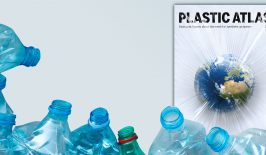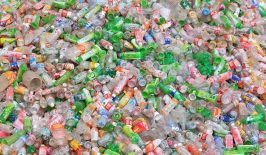An average of 13,000 pieces of plastic waste now float on every square kilometre of the surface of the sea. In many oceans, huge whirlpools of waste have formed, some of which are four times the size of Germany. Plastics in the sea decompose extremely slowly, taking centuries to break down. As a result, plastic waste in the world’s oceans is becoming an ever-greater danger to the entire ecosystem, and ultimately also to us humans, as the plastic particles also make their way into our food chain.
In countries like Vietnam, Malaysia or Cambodia, plastic waste is particularly problematic. In these countries there are often incomplete or ineffective recycling programmes in place and until a few years ago, large industrialised countries were even allowed to export huge amounts of their waste to many countries in Asia, sometimes illegally, which exacerbated the problem. Since the Basel Convention was adopted in May 2019 by a total of 187 countries, however, the rules around exporting of plastic waste have been tightened considerably.
Nevertheless, many countries in Asia are still struggling with huge amounts of waste – and Cambodia is no exception. In the capital Phnom Penh, which has a population of around 5 million people, about 3,000 tons of garbage accumulate daily. But only about 20 percent of the plastic waste in Cambodia is recycled. Since waste collection services in Cambodia don’t reach all citizens and garbage dumps are sometimes located directly next to rivers, plastic waste is now also accumulating on the streets and in the natural environment.
Drones for Environmental Protection
To address this problem, the government of Cambodia, in cooperation with the World Bank, has launched a project to improve waste management in two major cities, Siem Reap and Sihanoukville, and to reduce plastic pollution in rivers, canals and on beaches. However, effective methods are needed to assess the initial situation, and also check the impact of the projects.
This is where the Marine Perception research group from Oldenburg, which is part of the German Research Center for Artificial Intelligence (DFKI) comes in. The researchers have developed a concept for monitoring environmental pollution with the help of drones. “The drones are equipped with sensor technology and we use them along waterways to identify potential problem areas from above,” explains Oliver Zielinski, the project manager responsible for the initiative at DFKI. “The area is then scanned again from a lower altitude. The sensors point directly downwards and record the whole area.”
Multispectral cameras mounted on the drones are able to detect plastic waste floating in rivers or accumulating on beaches. They can also analyse how much waste is located at a certain point and whether it seems to be household waste or industrial waste. For this purpose, the research group uses a classification catalogue with 14 different types of waste. An algorithm and artificial intelligence is used to help with the analysis.
Drone Data That Leads to Environmental Action
The data collected by DFKI serves to give the Cambodian government an overview of the current waste situation and as a basis for them to prepare and implement an effective “plastic action plan”. This will hopefully translate into long-term and effective strategies to avoid plastic pollution in the future.
Locating and collecting waste is usually very time-consuming, so aerial drone images like this can be hugely powerful – offering detailed, comprehensive and quickly-collected evidence of the littering situation over large areas of land. The AI-based applications also make it easier to classify the types of waste. Originally, a collaboration with the University of Seoul was also planned, in which, in addition to the drones, satellites were to be used for an even broader identification of polluted areas. While this collaboration was cancelled due to internal reason, the approach seems promising: A research team from the Plymouth Marine Laboratory in the UK and the University of the Aegean in Greece have presented a paper illustrating how high-resolution satellite images can be used to effectively detect and identify “macro plastics” (plastics with a size of more than five millimetres) floating in out seas and oceans.
The DFKI pilot project ended at the end of last year. This year, the first drones will be deployed in the Philippines, Myanmar and Cambodia. Due to the limitations of the coronavirus pandemic, the project has been put on hold, but as soon as they get the green light again, local operations will be continued.
This is a translation by Mark Newton of an original article that first appeared on RESET’s German-language site.







